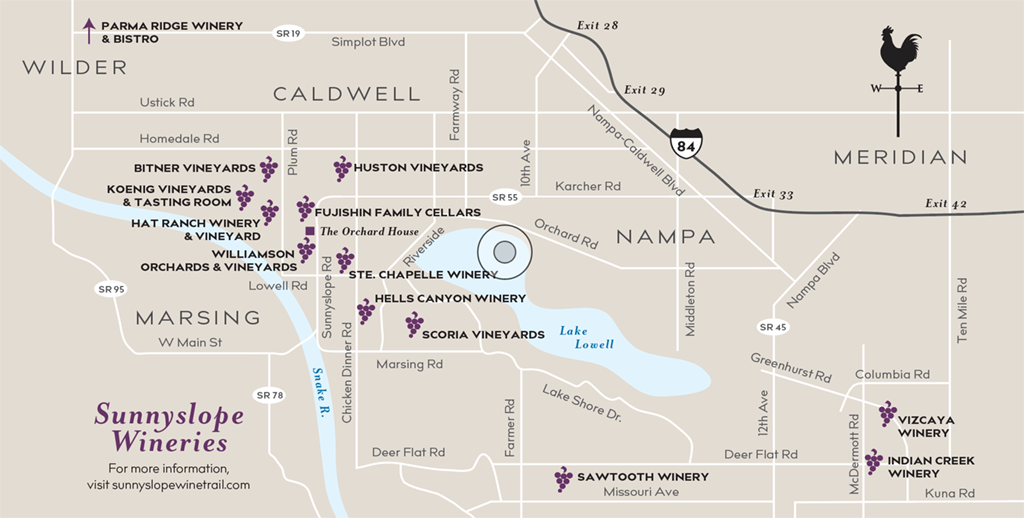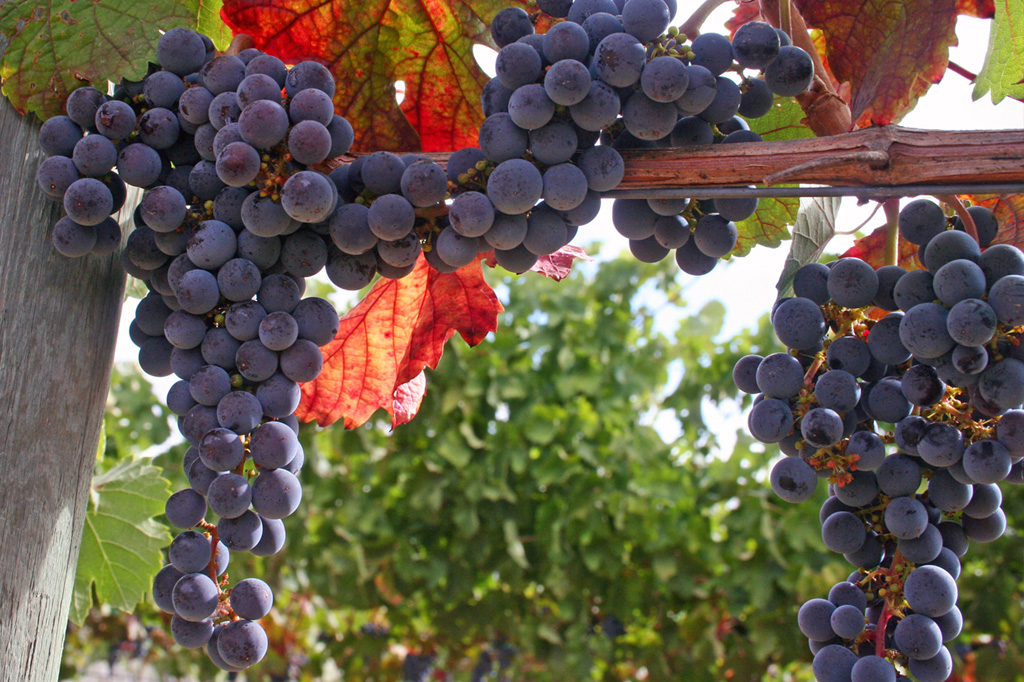The view is gorgeous. The wine is already good and getting better all the time. The Sunnyslope vine-yards
and wineries are on the upswing, and the world is starting to notice.
Nobody was calling the Sunny-slope area near Caldwell a wine region when Greg Koenig started Koenig Vineyards in 1995. Sure, Ste.
Chapelle, which is still Idaho’s largest winery, had already operated nearby for nearly two decades. And a few other small vineyards took advantage of the ideal south-facing slopes. But the handful of wineries south of Caldwell were too small and too remote to catch much attention.
“Two or three wineries together might just be two or three of us crazy people who set up shop in an obscure region,” Koenig says. “And that’s what it was.”
Even locals didn’t care about wineries in Sunnyslope or anywhere else in Idaho. Boise restaurants carried almost exclusively California wines from famous wine regions such as Napa Valley and Sonoma County. The remaining menu space was dedicated to wine from Washington, which was beginning to gain its own acclaim following successful marketing campaigns.
Idaho didn’t have enough wineries, enough volume or enough of a brand to have a seat at the table. That wasn’t all. “Idaho winemakers had to earn their reputation,” Koenig says. “They needed to make better wine.”
Sunnyslope Grows Up
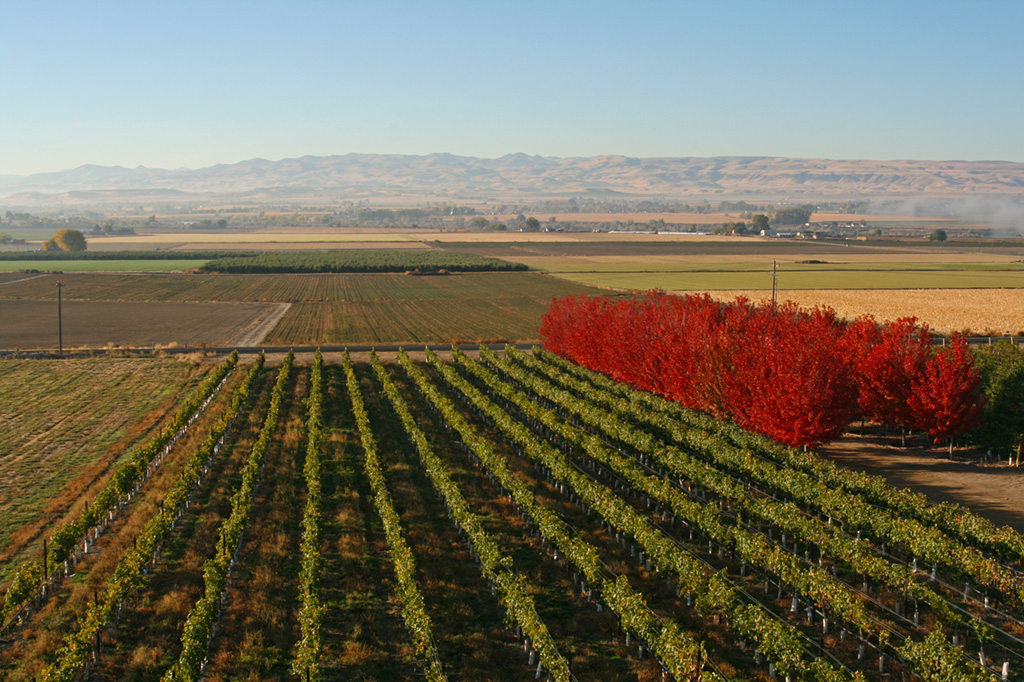
Koenig Vineyards
The landscape has changed during the past two decades. Today, more than 50 wineries call Idaho home. The state has its own Snake River Valley American Viticultural Area to promote, just like the famous wine regions in California and elsewhere. Most Boise restaurants not only carry local wines, they build wine lists around them.
Sunnyslope has become the AVA’s
crown jewel, with a wine trail featuring 14 wineries in Canyon County and another slated to open this year.
Those wineries enjoyed a surge in traffic during the last two or three years thanks to their growing reputation. Koenig opened his tasting room seven days a week initially just to ensure his employees had enough work. Now, customers come every day, including during the winter months when business used to dry up. During peak season in the summer and fall, 200 or 300 people will pass through his tasting room in
between stops on the wine tours,
often unloading off of buses or traveling from outside the state to sip wine and enjoy the view overlooking the vineyard before heading to the next winery on the tour.
“In the bad old days there would be Saturdays when nobody came to the tasting room,” Koenig says. “Now, there’s Idaho wine tours, and wine seekers. There’s enough of a cluster here that people can make an afternoon of it.”
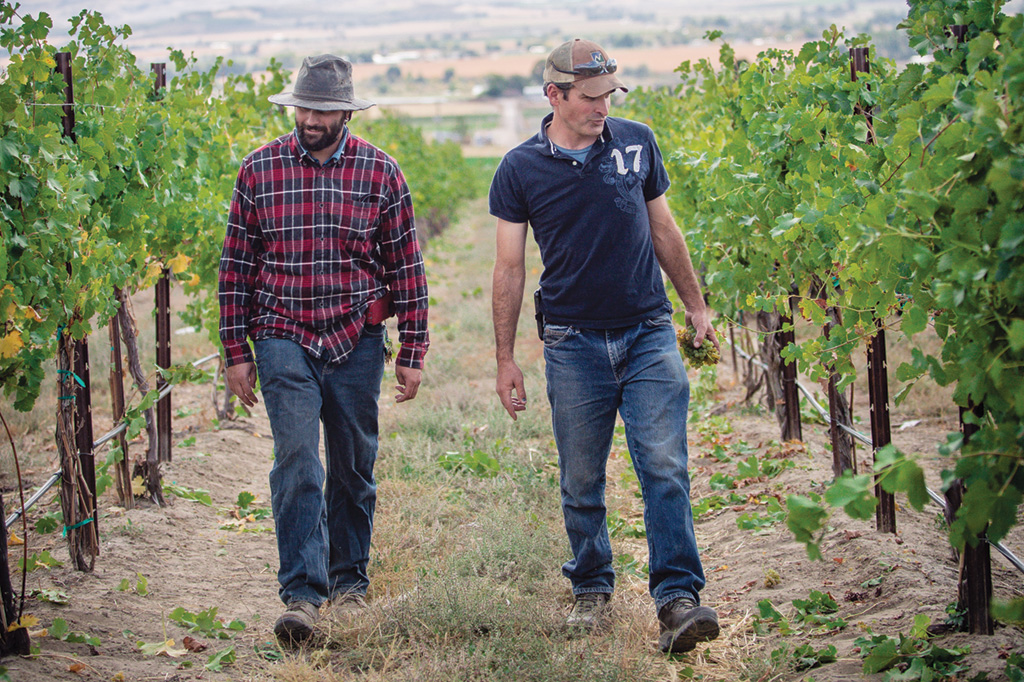
Williamson brothers, Patrick and Michael, inspect the crops at Williamson Orchards & Vineyards. Photo by Kim Fetrow/Courtesy Idaho Wine Commission
Neighboring Williamson Orchards and Vineyards has converted more and more of its fruit tree acreage to wine grapes since opening its tasting room in 2001. Sunnyslope wine was a tougher sell back then, says Beverly Williamson, who runs the operation with her brother, Michael, and cousin, Patrick.
“When we opened, we were begging people just to try our wine,” says Williamson, who runs the farm with her brother and cousin. “You don’t have to like it. Just try it.”
But since the wine tours started a few years ago—and since the Williamsons built a larger tasting room that’s easy to spot off of I-55—tasting room traffic and sales have climbed each year.
After producing their own first vintage, the Williamsons partnered with Koenig, trading his winemaking for grape acreage.
Williamson and the rest of Sunnyslope has since flourished. Williamson says that’s thanks in part to the Sunnyslope winery operators’ willingness to help each other and share expensive equipment. Wine is that rare business where your neighbors’ success can only help your traffic and reputation.
“If I need help shoveling during Snowmageddon, somebody will be there,” she says. “We’ve helped pick grapes when neighbors couldn’t get the labor. The thing I like about this group of crazy winemakers is they treat it like a community.”
Creation of the Snake River AVA and other efforts by the Idaho Wine Commission helped raise Idaho’s profile in the wine world. Part of that is due to the fact that Sunnyslope has a cluster of wineries, making it a destination, says Mike Dunne, a wine critic for The Sacramento Bee and a longtime judge for wine competitions. But he says it’s also because Sunnyslope winemakers have upped their games. European wine powerhouses such as France and Spain experimented for centuries before honing in on the varieties perfectly suited for the temperatures and soils in each region, he says. California growers
first planted wine grapes in the 1700s and became more serious about their craft in the 1970s.
Making top-shelf wine takes time to figure out which varieties and methods fit the region, Dunne says. For example, Napa Valley offers ideal conditions for growing cabernet sauvignon, thanks in part to the cool breeze coming off of the San Francisco Bay. Sunnyslope is now further along in that process, and the results are delicious, boding well for the future.
“It’s a really young wine region, and there’s a lot of searching, a lot of trial and error going on,” Dunne says. “Some of it is working out really well.”
Discoveries and Misfires
Conventional wisdom during Idaho wine’s adolescent years said the state wasn’t warm enough to grow red wine grapes.
In truth, the high desert of the Snake River AVA offers plenty of warm, dry sunshine during the growing season and loose, nutrient-rich soil that grapes love. The gentle hills of Sunnyslope offer 270-degree exposure to the sun as it travels its daily course while pushing the cold air downhill at night. Koenig says his 14 acres are about three degrees warmer than at the valley floor, keeping his vines in their sweet spots.
White grapes are tolerant to overwatering, but red grapes need to be slightly stressed in order for their flavors to concentrate. Brad Pintler, who founded Sawtooth Winery in Nampa, was the first to figure out in the late 1990s that Idaho vineyards could grow better red grapes by limiting their irrigation, Koenig says. Those lessons opened worlds for Sunnyslope growers. “Now, we’re known for red wines,” he says. “It’s what people come for. Red wine is where serious wine people start to give attention to a winemaking region.”
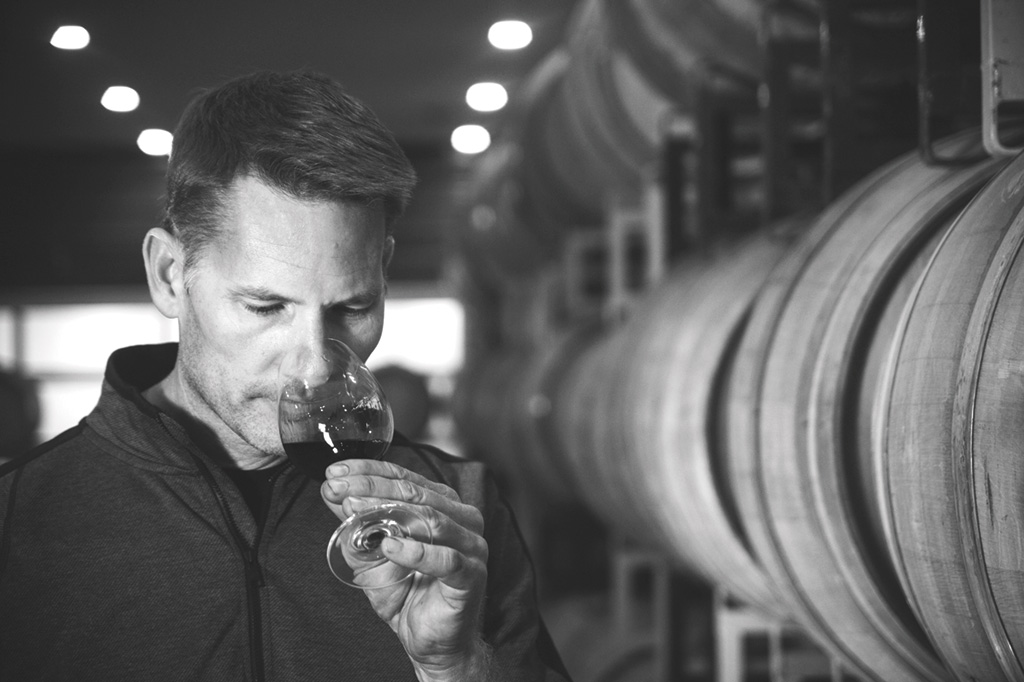
Greg Koenig samples some wine in the Koenig aging cellar. Photo by Kim Fetrow/Courtesy Idaho Wine Commission
Not all experiments worked. Koenig tried to grow and make pinot varieties for six years. The cool-weather grape cooked on his vines and never produced quality juice.
But other trials produced surprising results, including one by Michael Williamson, Beverly’s brother and part of the fourth generation of farm operators. Their father, Roger, told Michael to put his horticulture degree to work by researching grape varieties that would match the farm’s growing conditions. Michael reported back that Sangiovese, an Italian grape with a name meaning “Blood of Jupiter,” was the best match.
Roger was skeptical. He wasn’t alone.
“All of the good old boys in the valley shook their heads when we planted five acres of Sangiovese,” Beverly said.
The grape thrived. The wine was good. The Williamsons planted more Sangiovese, which became a top-seller, not only as a red but also as a rosé sold under the “Blossom” label. “I can’t keep it on the shelves in the tasting room,” Beverly says. “Local winemakers are thrilled to have this new variety to play with.”
Koenig and other growers have had success with another lesser-known variety: tempranillo, a full-bodied, early-ripening red grape. Dunne, the wine critic, said he first noticed Sunnyslope’s tempranillos when he and other judges awarded medals to several. Dunne, who has visited Sunnyslope several times, says he’s excited by the mix of quality wines coming out of the region. “What struck me is the exploration,” he says. “You’ll find an outstanding tempranillo, a Spanish grape that does well in warm, arid climates, right next to a vineyard of Riesling, which is a cool-climate, short-season grape. Yet those rieslings can be
outstanding, attractive, layered, distinctive.”
Meanwhile, Idahoans’ attitudes toward their local winemakers have flipped, thanks in part to the Buy Local and Farm-to-Fork movements, says Moya Shatz Dolsby, executive director of the Idaho Wine Commission. Consumers now seek out Idaho wine just like they do local micro-brews, produce, and anything else.
“Idaho wine is getting out there into the world more because we have great loyalists,” Shatz Dolsby says. “Consumers in Idaho are ambassadors for the Idaho wine industry. It makes my job a lot easier.”
Finding a Flagship
Pleasing critics isn’t enough. Successful wineries—and often wine regions—appeal to consumers by promoting flagship varieties. Of its many strong wines, Napa Valley is best known for cabernet sauvignon. Sonoma County produces some of the nation’s best chardonnay. Oregon is pinot noir country.
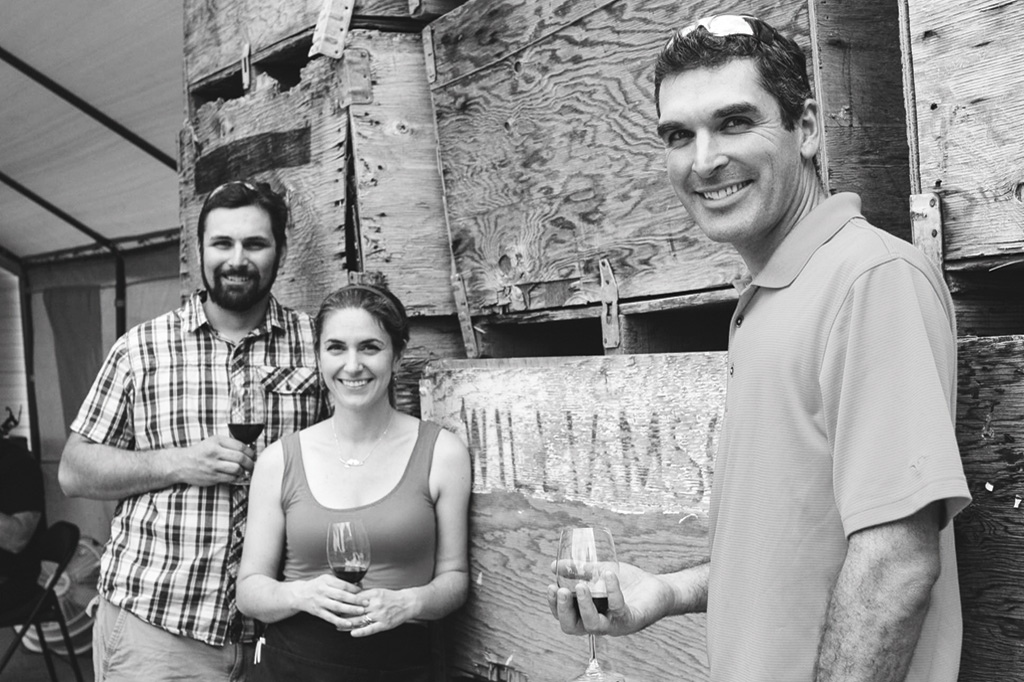
The Williamsons: Patrick, Beverly, and Michael. Photo by Kim Fetrow / Courtesy Idaho Wine Commission
Finding a calling card variety could do wonders for the Snake River AVA and Sunnyslope brands, Beverly Williamson says. It’s still early in the process of figuring out what grows here best, but she says Idaho can do itself a favor by not replaying the hits. “There’s plenty of good merlot and chardonnay in the world. That’s why we don’t grow it,” she says. “If we have our name on it, we want it to be the best. We want it to be more unique to our area.”
Williamson said that Viognier—a white wine gaining popularity in the U.S.—could be the ticket. “Everybody is surprised that we don’t have chardonnay, but we have this funny ‘V’ grape,” she says. “Some people call it ‘vinegar.’ No! It’s Viognier, and it grows really well here.”
Therein lies the rub, Koenig says. Idaho wineries can compete with more established winemakers
and regions by producing the four big sellers in the U.S.: cabernet
sauvignon, chardonnay, merlot and pinot gris. But that’s not necessarily what Idaho does well.
“But once you get into the more obscure stuff, that’s a harder sell,” he says. “We plant a little bit of those lesser-known grapes for fun, and to see how they do. But commercially, we have to stay within the wheelhouse of American tastes.”
Koenig says he brings his reserve syrahs to fancy dinners when he hopes to show off what his vineyard and the region can do well. People rave about the award-winning syrah, and then order a case of cab. “Most of our sales are cabernet sauvignon, and that can do okay here, as long as the grower is careful to keep the yield low,” he says. “But the function of that success is that everybody knows what cabernet sauvignon is.”
Maybe Idaho doesn’t need to find a banner wine variety, Shatz Dolsby says.
“Oregon has a lot of great wines that nobody knows about because their marketing campaign is only about Oregon pinot noir,” she says. “That’s a disservice to people making awesome chardonnay. Even if we do have a leading varietal, I don’t know if we should hang our hats on that.”
The Future
Idaho wine needs new blood, Koenig says. And by that he means the state needs new money. Idaho wine is good and improving. Vineyard acreage is the factor limiting industry growth. The state has about 1,300 acres devoted to wine grapes. California has more than 900,000. Idaho simply cannot produce enough wine to distribute to the West Coast, let alone the nation.
Today, Idaho winemakers are local and mostly small-plot operators, Koenig says. If the state is to ramp up production, we’ll likely need out-of-state vintners to invest millions for land, irrigation and equipment. In the meantime, most of the new winemakers have opted to start boutique wineries and buy their grapes rather than sink money—and two years of incurring expenses before yielding fruit—into growing their own.
“I look forward to tasting Idaho wine in 10 years, when we have new vineyards and the others have time to figure it out,” Koenig says.
Shatz Dolsby says there’s plenty of land available in the Snake River AVA, including a 300-acre plot near Melba that could be converted from a dairy into a vineyard. “There’s a lot of land that can be pieced together that’s tumbleweed right now,” she says.
The hills and views that come with great grape-growing country
also make great home locations, meaning prospecting vintners must pay a premium to outbid developers.
However, that’s even more true in California, Koenig says. He hopes vintners get fed up with higher prices elsewhere and come to Idaho. “We’re hoping some people will come here, used to California prices, and say, ‘let’s develop these 80 acres into a world-class vineyard.’”
The Orchard House
The Orchard House serves as the informal city hall for the Sunnyslope winemakers and grape growers. For years, some of the early Sunnyslope players gathered at the café for coffee and to talk shop, including Greg Koenig of Koenig Vineyards, Gregg Algers from Huston Vineyards, and Rob Bitner from Bitner Vineyards. A member from the Williamson family of Williamson Orchards & Vineyards dropped in occasionally, though one of the regulars would often stop by the farm to chat if they didn’t, Beverly Williamson says. When they didn’t talk about weather or bugs or wine, they discussed their most daunting task: bringing attention to Sunnyslope wine. Over the years, these conversations coalesced into the formation of the Sunnyslope Wine Trail, the nonprofit responsible for increasing wine tourism in the area. Koenig and Martin Fujishin, Koenig’s former assistant who now owns Fujishin Family Cellars & Lost West Winery, secured a grant that paid for the signs at each winery that help tourists find their way to the next winery. The Orchard House itself is a longtime supporter of the Sunnyslope wine scene, carrying local products, catering to wine tourists and training up staff to know more about wine than probably any other casual Idaho café.
